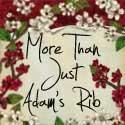 The
two summers before this one, we lived in Maw Maw's house with its
exterior walls so thin and devoid of insulation that the sound of
husband walking on sun-parched grass outside our bedroom awakened me
from many a Sunday afternoon nap. You wouldn't think the sound of sneakered feet crunching, swishing through growing blades could travel through wood, but you'd be wrong.
The
two summers before this one, we lived in Maw Maw's house with its
exterior walls so thin and devoid of insulation that the sound of
husband walking on sun-parched grass outside our bedroom awakened me
from many a Sunday afternoon nap. You wouldn't think the sound of sneakered feet crunching, swishing through growing blades could travel through wood, but you'd be wrong.
My then two-year-old son learned to hear the steady hum of the tractors vibrating through cracks in plank walls. In self defense, I learned the sound, too, the first hum finding me either collecting shoes to go outdoors or rushing to turn on a window unit to keep my son from hearing it, too, and begging to see the tractor.
Although I didn't realize it at the time, those two years were serving as a transition, molding this high heels, crepe blouse, and black pencil skirt college professor into a farmer's wife. It was in that old white house--a quarter mile's walk down an overgrown, all-too-narrow, country road--that I began to learn the sights, sounds, and smells of life on a hay farm.
I learned to catch the tell-tale whiff of freshly cut hay on the occasional breeze, to name the different pieces of equipment that attached to the back of the tractors, and to watch the radar for the rain's abundance or for its lack.
But there, life on a hay farm took place in my back yard, far beyond the carport, the pear tree at the yard's far corner, the ever-soggy slash of wetlands' tall swamp grass, and the single tombstone where Paw Paw was buried beneath the live oak tree.
From my front window, my yard looked ever-similar to the one I'd had when living on the outskirts of the city, a wall of always-green azaleas walling out the wilderness. I could pretend nothing had changed.
Only when I looked out back (and only if I looked really hard) could I see in the distance a blob of the classic John Deere green amidst a billowing cloud of dust. I had to look even harder to make out the raised bumps where square hay bales sat on an otherwise brown field, waiting to be picked up .
 This is the first summer with hay season taking place out my front door.
This is the first summer with hay season taking place out my front door.
The hum is now a steady, unconcealable roar, the blurry image much more crisp so that I can count a line of single bales evenly spaced to the horizon, can see the sweat on husband's shirt as he drives past. Eyes closed, I now hear the difference between sounds of the rake, baler, and stack wagon.
It's been an adjustment, what with the clouds of hay dust creeping past the front flower bed barrier and quilting every leaf, chair, vehicle, window in their path.
This past week with husband windrowing as I clicked camera into falling sun, I realized it no longer feels awkward to be this farmer's wife by day, college professor by night. It all seems to fit.
The next day when I woke up to thunder, my thoughts instantly flipped to not my own yard's sun-singed plants with drought-curled leaves but to a field of hay on the ground. With each rumble that jostled me from sleep, I said a prayer for the rain to go past.
Prayer. It shows the state of the heart, reveals where the heart's interests, concerns, longings, allegiances lie.
Only God could make my heart large enough to love a farm filled with what I'm most allergic to, to love another set of parents I once could not have imagined living an evening's walk away from.
I've heard that prayer changes a person, and I know this is true.
But prayer also can show a changed person.
(Since the clanking hum of tractors, hay balers, and stack wagons has filled the farm today, marking the official start of summer, I thought it fitting to repost this from the archives.)








I can relate to this post on so many levels. My heart is beating with yours in this one, beginning to end. Love this. Love YOU.
ReplyDelete